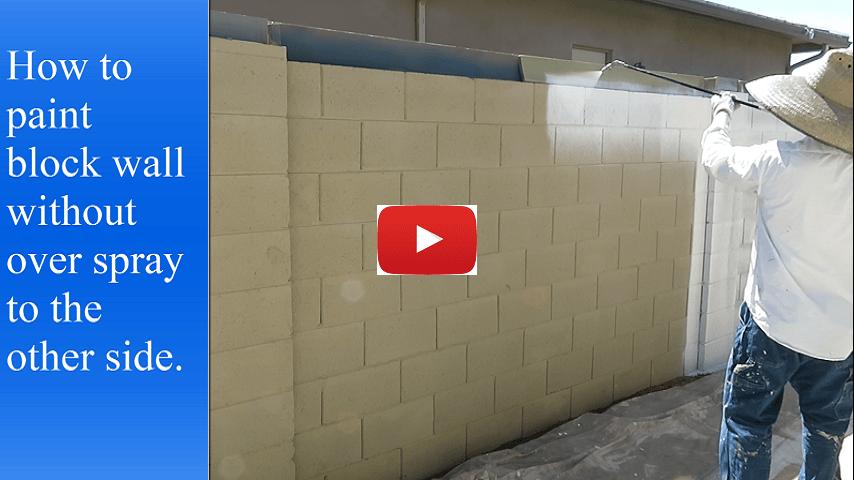
- Watch us on Youtube.
602-214-3040

602-214-3040
There are different ways of painting a block wall. One is to paint the wall by using a roller for larger surfaces and the brush for all the edges. This is not the best way to paint a block wall because comparing to spray painting it would require a lot more time as well as paint. The coverage may not also be as uniform as it is with spray painting. When it comes to exterior block walls, spray painting is definitely the best way to go.
Painting a block wall in 6 steps.
1. Moving gravel away from the wall.
First step in preparing block wall for spray painting is to move any gravel away from the wall, so it does not get any overspray during spray painting.
2. Pressure washing a block wall.
Step number two is pressure washing. Any gas pressure washer will work. Some electric pressure washes do not have enough pressure to rid the wall of dirt and dust. For the tip we usually use number 40. It has wide enough fan and the pressure washing part usually takes about 1-2 hours depending on the length of the wall. For pressure washing we do not use any detergents just plain tab water.
3. Masking anything that is not being painted.
Masking off surfaces that will not be painted is step number three. Most of the block walls that we paint do not require any repairs, so we give enough time for the walls to dry and then start masking. During the summer months in Arizona we may start masking right after we pressure washed the surface because everything dries almost instantly. In the winter months we may need to wait for 24 hours before we are able to start making, as tape do not stick to surfaces that are not completely dry. There are a few things that require masking on virtually all walls that we paint. We mostly work on the block walls that go around the back of someone’s property. All the edges of the wall that borders with a neighbor need to be taped off, especially if the color that we are using is a bright one. Some areas of the block wall typically on the side of the house meet the concrete that we cover by running a 12 inch masking paper and cover the rest of the area with tarps. We use green masking tape that sticks great to all masonry surfaces. It is more expensive than the yellow tape but we do not have to worry about tape pealing back under the pressure from the airless sprayer. Any side gates need to be masked off. For metal surfaces we use blue painters tape that has very little adhesive and it is easy to remove when we are done.
4. Priming a block wall.
If the wall has been painted before it does not need to be primed. If it is unpainted block it would first require primer before the top coat of paint can be applied. Without the primer the paint applied to unpainted block may or may not last. It would take a lot more effort to remove loose paint and re-paint again if the paint does not hold due to the lack of primer. We never take chances and if the surface is not painted we use the primer first. One of the best primers to use for block walls and any masonry surfaces is Eff-stop by Dunn Edwards. This primer prevents efflorescence, the white deposits of salt on masonry surfaces.5. Painting a block wall.
After we done with pressure washing, masking and priming the last step is spray painting. For painting block walls we usually use spray tip 4/13. It is just a preference just about any size of spray tip can be used. If we used a primer with the color closely enough matched to the paint color we apply one coat of paint and the job is done. If we used either non-tinted white primer or pained over previously painted surface we use two coats of paint.6. Clean up.
We give paint enough time to dry before removing any tape or paper from the surfaces that we were protecting from overspray. If the tape or paper is removed while the paint is still wet, it is possible to accidentally leave a paint mark on the surface we were trying to protect.
Preparation, priming and painting of a block wall. A step by step video from start to finish.
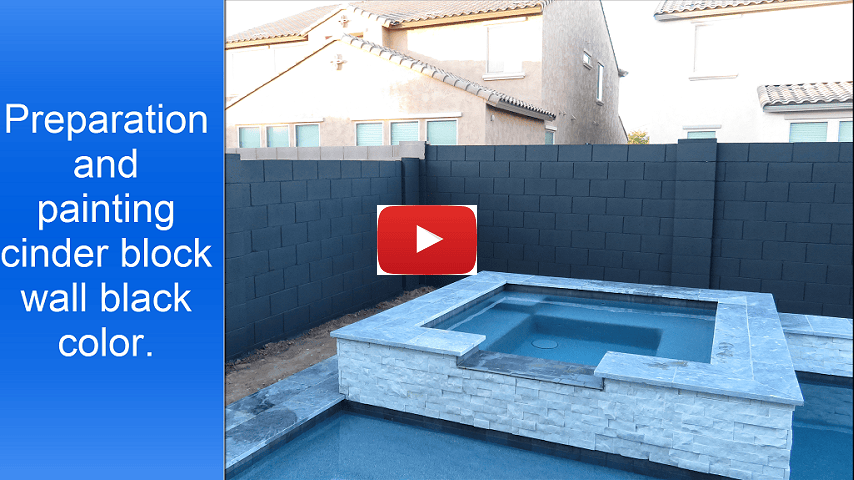
Preparation, priming and painting a cinder block. Main color plus accent color for columns.
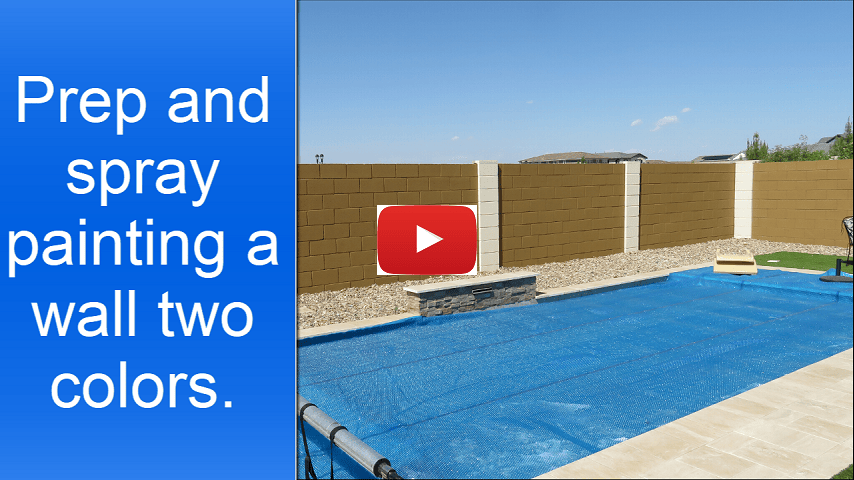
Preparation and spray painting a cinder block wall. Main color plus an accent.
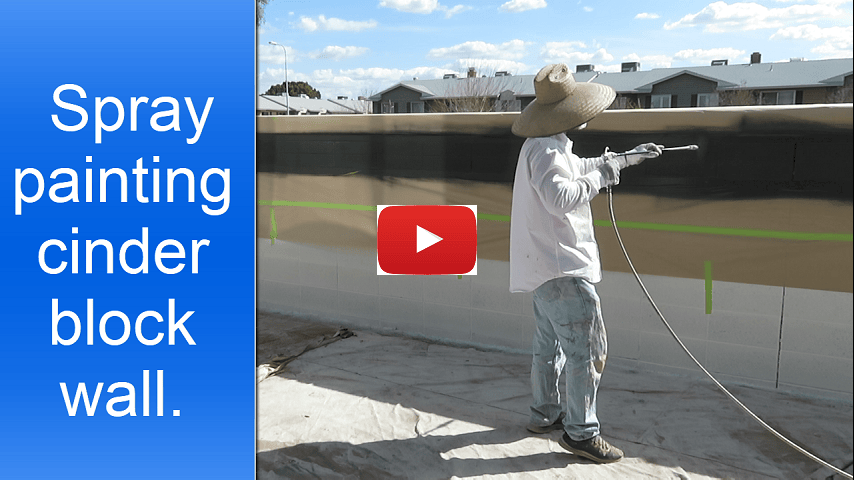
Power washing, masking, sealing/priming, scraping loose paint and painting a cinder block wall.
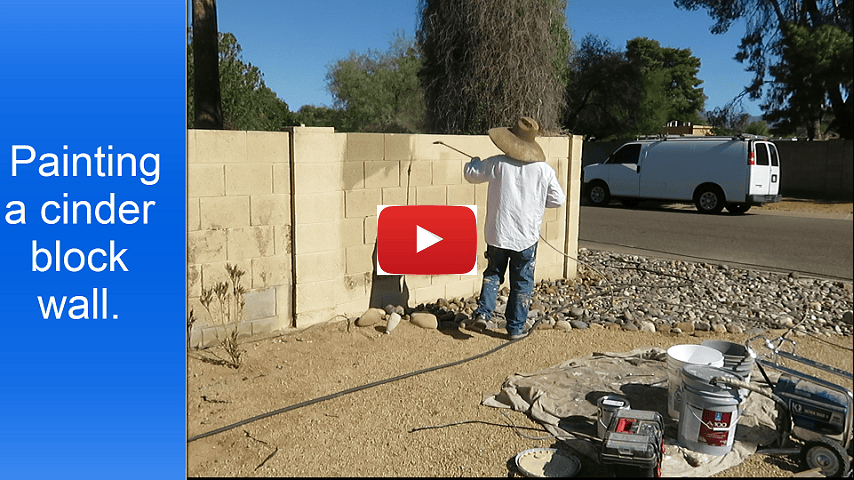
How to paint cinder block wall without overspray to the other side.
